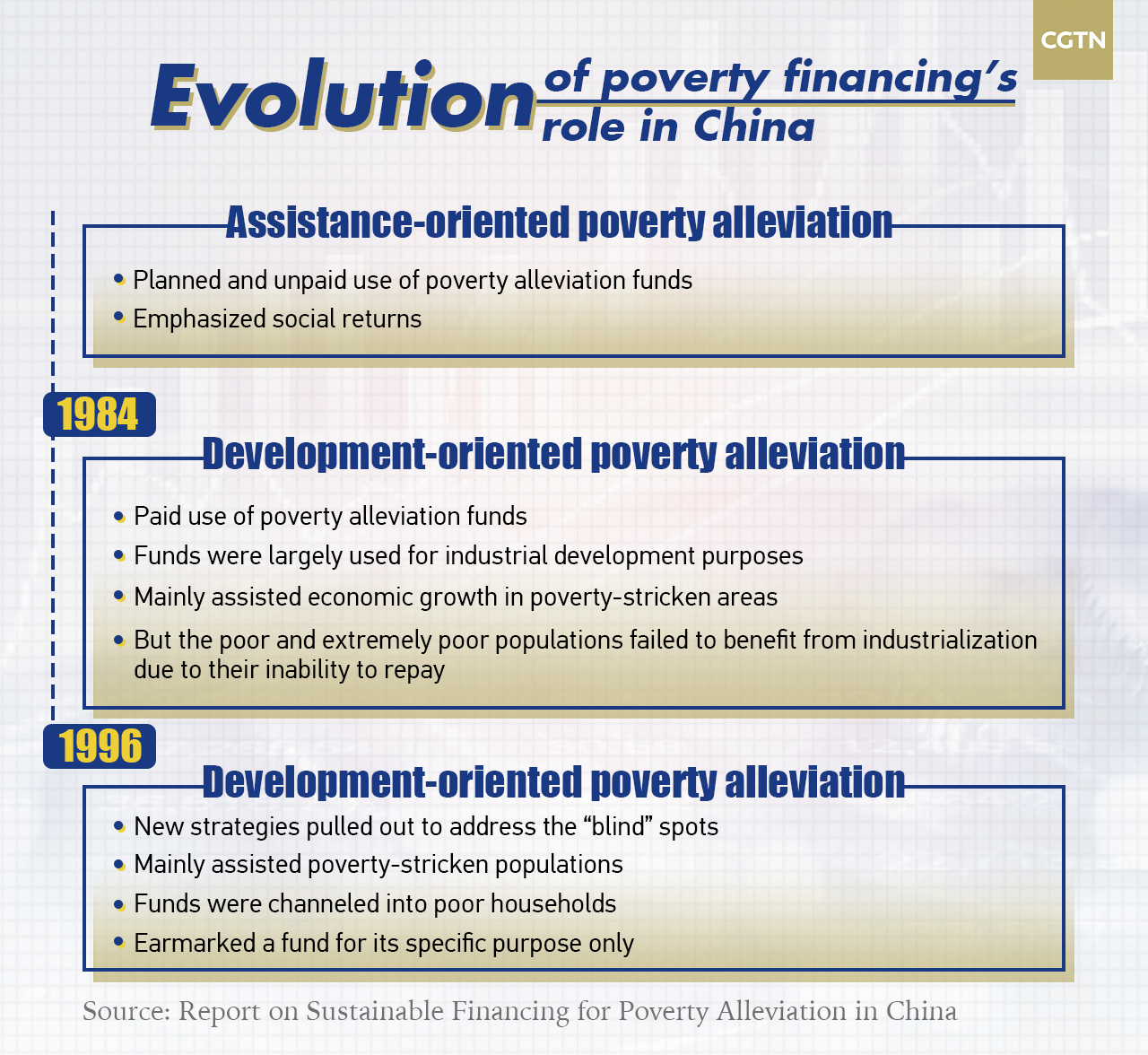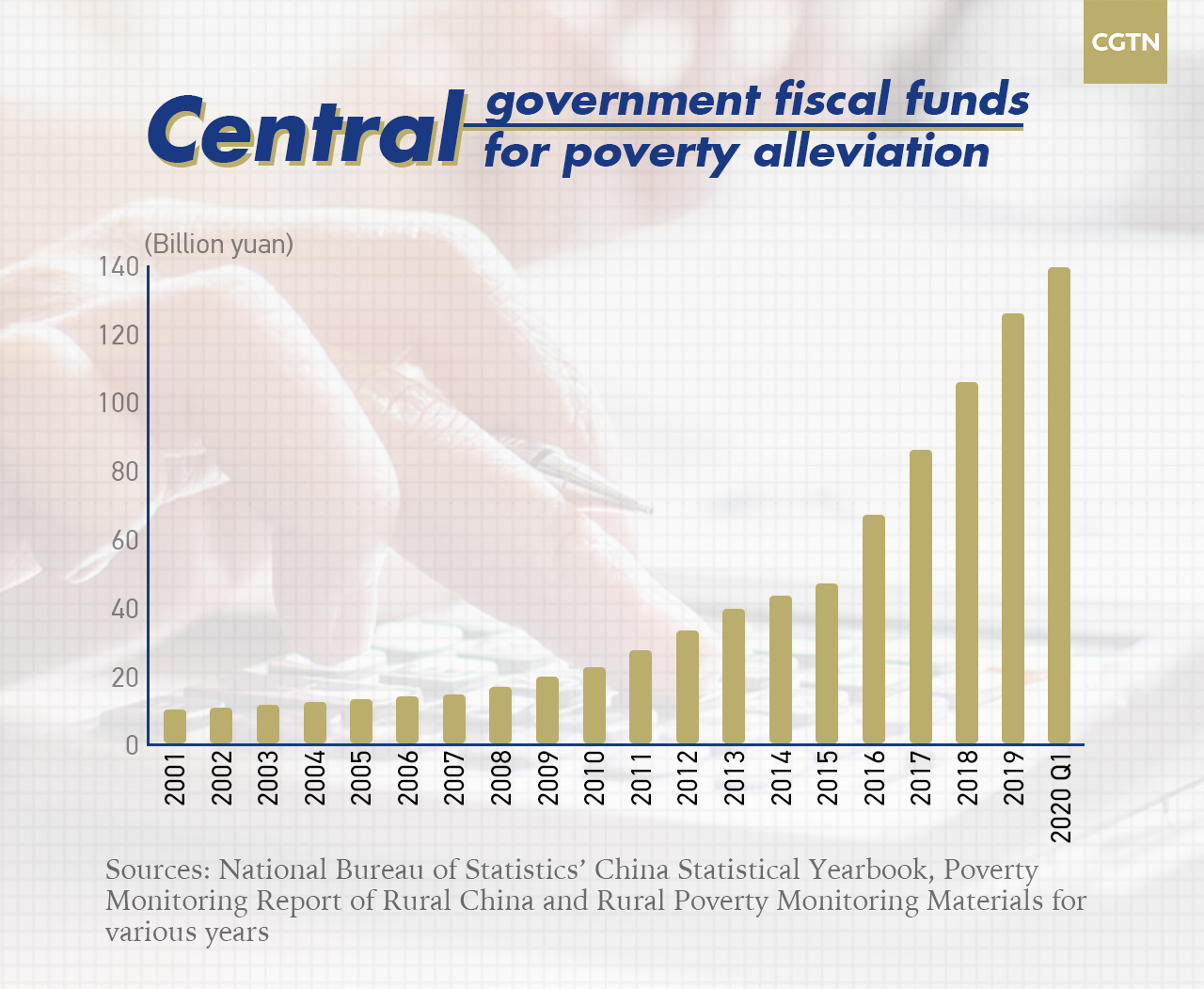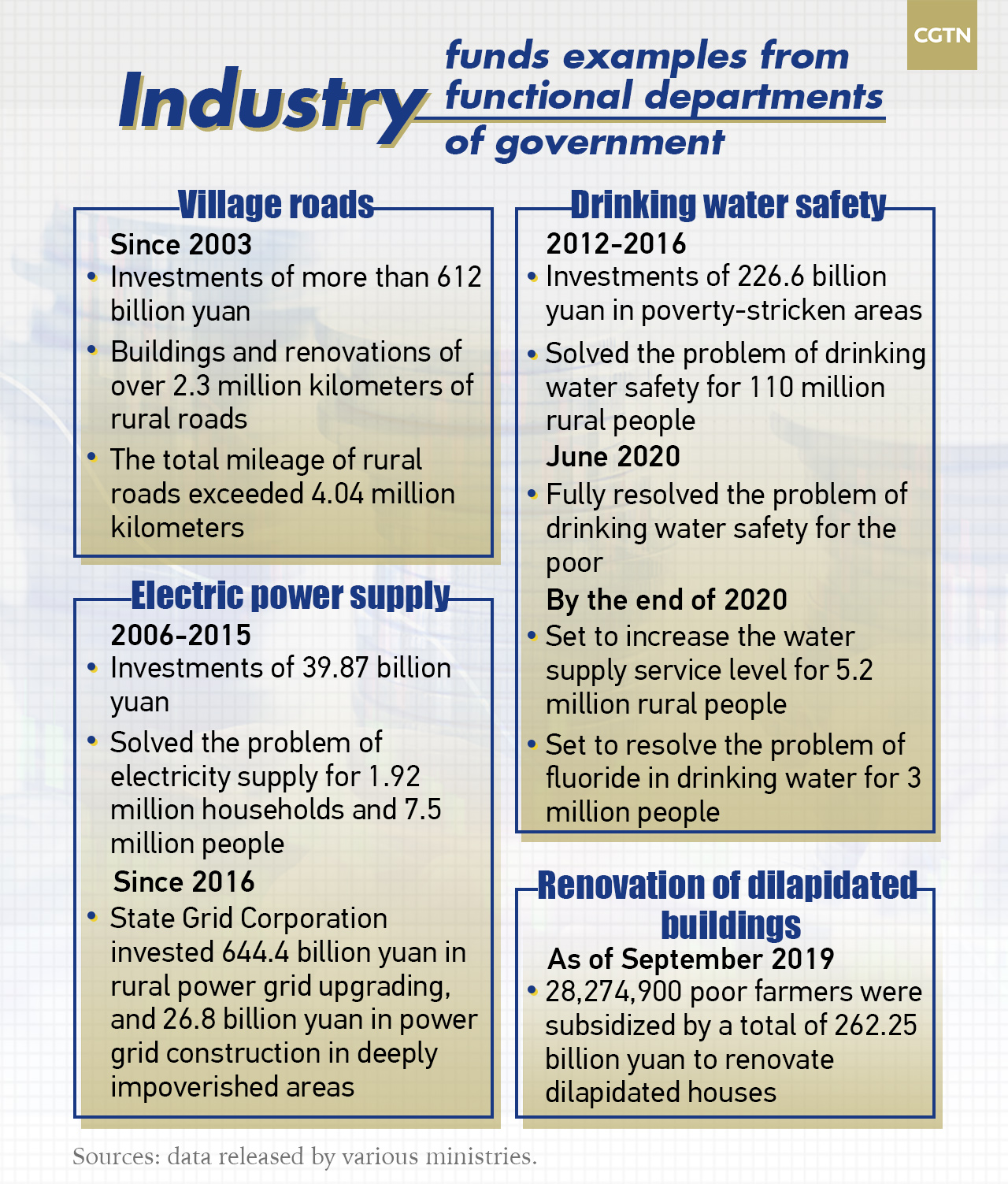Poverty alleviation cannot be achieved without effective financial support, which serves to generate fuel for poverty alleviation. Besides China's poverty policies that have contributed much to poverty reduction outcomes, financial resources also play a role in China's efforts to lift the poor out of poverty over the past three decades.
Since China's reform and opening-up in 1978, China's poverty reduction has gone through several phases, in which the role of poverty financing has also evolved.
Poverty financing has transformed from an assistance-oriented approach to a development-oriented approach, which features a shift from a planned and unpaid distribution of funds for relief to a paid and market-oriented fund allocation that focuses on capacity building for the poor.

Poverty alleviation work in China is financed by four types of funds - fiscal, industry, credit, and social - which were identified based on China's poverty alleviation approaches, according to the Report on Sustainable Financing for Poverty Alleviation in China.
Fiscal funds
Fiscal funds for poverty alleviation, shouldering the heaviest part among the total poverty financing in China, are specially earmarked by the central government to improve economic development and people's livelihoods in poverty-stricken areas. In the first quarter of 2020, China's fund for poverty alleviation has added up to 139.6 billion yuan (about 19.7 billion U.S. dollars).

From the 1980s to the mid-1990s, fiscal funds were primarily distributed by the central government in two manners: to distribute the funds by project and to distribute funds based on "base amounts" of the past year and "incremental amounts".
Since 2001, the central government began to use a factorization method to allocate fiscal funds which based on primary factors, such as the size of poor populations, per capita net income of farmers, fiscal strength of local governments, per capita GDP and policy adjustments, with the size of poor populations given the greatest importance.
In 2011, new measures were released to integrate more factors, including policy-based factors that link fund allocation with poverty reduction achievements as well as assessments of fund use effectiveness.
The fund allocation process from provincial to county-levels varies from province to province. Most provinces and autonomous regions distribute funds based on projects submitted by lower-level governments, while some provinces use the factor-based method to distribute funds among counties.
Industry funds
Apart from fiscal funding for poverty alleviation, functional departments of the government also participate in poverty alleviation with investments noting as industry funds.
A majority of the industry administrative departments command certain amounts of budgetary funds, most of which belong to projects or special funds, to support industrial development, infrastructure construction, and social undertakings in poor areas, or to directly help poor people improve their productivity and living conditions and promote the equalization of public services.

Credit funds
The difficulty for poor households to obtain loans is a major problem for financial institutions. Credit funding has become more important in the implementation of development-oriented poverty alleviation efforts in recent years.
In July, China Banking and Insurance Regulatory Commission and other three government departments pledged wider coverage of microloans for poverty alleviation and consistent implementation of existing policies, aiming to help the poor borrowers to mitigate the COVID-19 blow.
Launched in 2014, the microcredit product, as one of many forms in credit funding, refers to loans under 50,000 yuan, with favorable terms, to support low-income families.
China has offered 444.35 billion yuan in poverty alleviation micro-credit support as of the first quarter this year.
Social funds
Over the years, China has formed a social poverty alleviation system with Chinese characteristics, which refers broadly to all social communities' efforts in addition to that of the government and related industries.
The system has undergone a process from voluntary participation to standardized and institutionalized participation.
In the system, fixed-point poverty alleviation and east-west cooperation poverty alleviation are two of the most effective forms, among others.
Organizations designated by the state to engage in fixed-point poverty alleviation efforts include China's central state organs, enterprises, public institutions, and universities. In 2018, they directly invested 5.6 billion yuan into assisted counties, about 6.6 times that of in 2012, according to the 2019 Yearbook of China's Poverty Alleviation and Development.
In 2011, 267 enterprises from East China took part in the scheme and invested 65 billion yuan under enterprises' cooperation agreements. In 2018, the number of enterprises grew by 56 times, and the investment jumped to 122 billion yuan.
(Cover via CFP)